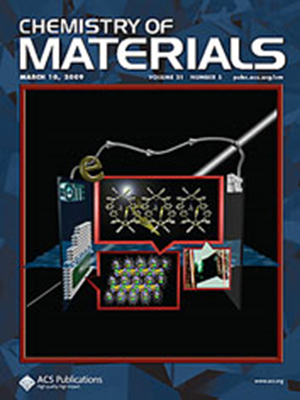Configuration Engineering of Plasmonic-Metal/Semiconductor Nanohybrids for Solar Fuel Production†
IF 7.2
2区 材料科学
Q2 CHEMISTRY, PHYSICAL
引用次数: 0
Abstract
Solar fuel production, which primarily focuses on harnessing solar energy to convert CO2 into fuels or produce H2 through water splitting, holds transformative potential for addressing global energy demands and environmental challenges. However, several obstacles still need to be overcome, particularly concerning the efficiency and scalability of solar fuel systems. Plasmonic-metal/semiconductor nanohybrids (PSNs) represent a cutting-edge class of photocatalysts designed to overcome current efficiency bottlenecks by merging the unique localized surface plasmon resonance (LSPR) properties of plasmonic metals with the catalytic efficiency of semiconductors, thereby enhancing the overall efficiency of light-driven solar-to-fuel conversion. Precise regulation of PSN structures is essential for guiding the extraction and flow of energy and charge carriers within the nanohybrids, which ultimately determines their photocatalytic performance. In this perspective, we aim to highlight the direct impact that the configuration of these nanohybrids has on the efficiency of solar fuel production through various triggered plasmonic energy transfer mechanisms. To this end, we begin with a brief introduction to the basic plasmonic effects and fundamental energy transfer mechanisms between plasmonic metals and semiconductors. We then provide representative examples of how PSNs with five categories of engineered configurations (namely, core–shell, yolk–shell, Janus/heterodimer/dumbbell, core–satellite, and other hierarchical structures) enhance solar fuel production through three primary mechanisms: plasmon-induced resonance energy transfer, light absorption/trapping, and hot electron injection. We conclude this Perspective by outlining the remaining challenges and research directions in this field.

求助全文
约1分钟内获得全文
求助全文
来源期刊

Chemistry of Materials
工程技术-材料科学:综合
CiteScore
14.10
自引率
5.80%
发文量
929
审稿时长
1.5 months
期刊介绍:
The journal Chemistry of Materials focuses on publishing original research at the intersection of materials science and chemistry. The studies published in the journal involve chemistry as a prominent component and explore topics such as the design, synthesis, characterization, processing, understanding, and application of functional or potentially functional materials. The journal covers various areas of interest, including inorganic and organic solid-state chemistry, nanomaterials, biomaterials, thin films and polymers, and composite/hybrid materials. The journal particularly seeks papers that highlight the creation or development of innovative materials with novel optical, electrical, magnetic, catalytic, or mechanical properties. It is essential that manuscripts on these topics have a primary focus on the chemistry of materials and represent a significant advancement compared to prior research. Before external reviews are sought, submitted manuscripts undergo a review process by a minimum of two editors to ensure their appropriateness for the journal and the presence of sufficient evidence of a significant advance that will be of broad interest to the materials chemistry community.
 求助内容:
求助内容: 应助结果提醒方式:
应助结果提醒方式:


